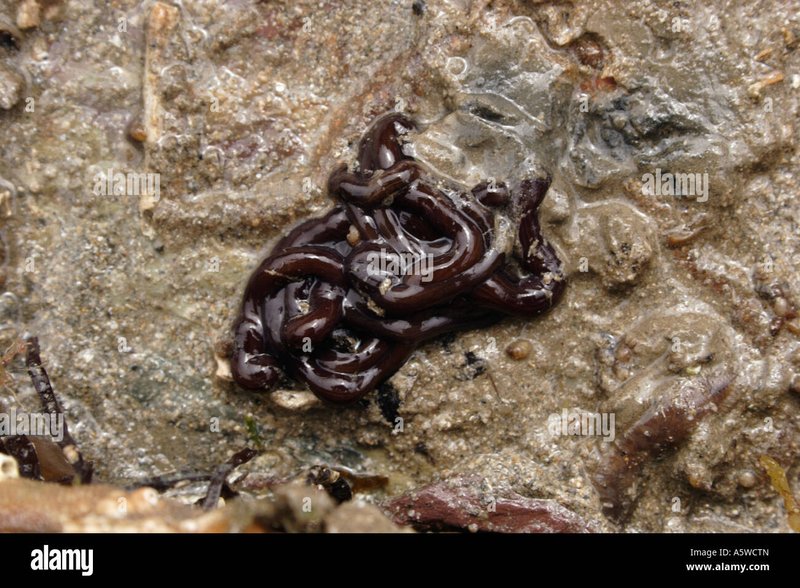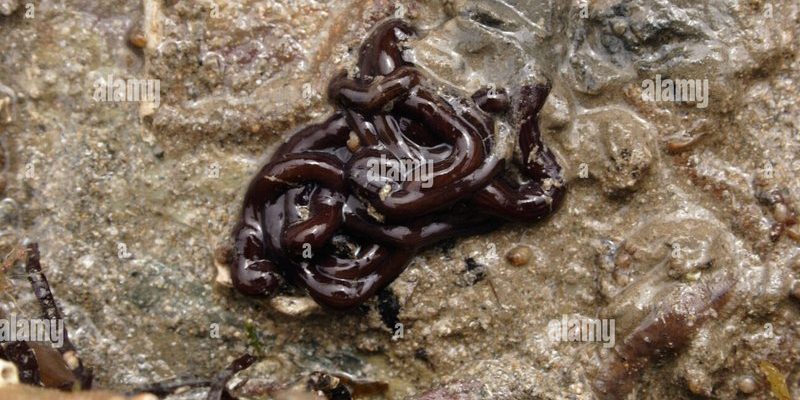
Bootlace worms can reach impressive lengths—some can stretch over 30 meters! You might be wondering how they manage to thrive in such rugged environments. Well, it all comes down to their unique behaviors and survival strategies. In this article, we’ll dive into the behavior of bootlace worms in rocky shorelines, exploring their habitat, feeding habits, reproduction, and their role in the ecosystem.
What Are Bootlace Worms?
Bootlace worms, scientifically known as *Lineus longissimus*, are part of the group called nemerteans, or ribbon worms. These enigmatic creatures have a soft, elongated body that often appears slimy. They’re named “bootlace worms” because of their resemblance to bootlaces, especially when they’re coiled up or stretched out along the rocky seafloor.
These worms can be found in shallow coastal waters, particularly among the rocky shorelines of Europe and North America. They prefer to live in damp environments, hiding among seaweed and stone crevices. Their camouflage is quite effective, allowing them to blend in with their surroundings and avoid predators.
Habitat Preferences
Bootlace worms thrive in rocky shorelines where they can find ample hiding spots and food. They often burrow into the sand or find shelter in crevices among rocks. The terrain offers them protection from potential threats and provides a rich supply of nutrients.
- Rocky substrates: Bathed in sunlight, these areas provide a habitat that hosts various plants and animals, creating a balanced ecosystem.
- Seaweed abundance: Bootlace worms often live near seaweed, which serves as both camouflage and a source of food.
- Presence of tide pools: The fluctuating water levels in tide pools create a diverse environment for feeding and breeding.
You might find it interesting that bootlace worms can tolerate different conditions, including changes in temperature and salinity. This flexibility helps them survive in the ever-changing coastal environment.
Feeding Habits of Bootlace Worms
So, what do bootlace worms eat? These fascinating creatures are carnivorous and primarily feed on small invertebrates such as crustaceans and other worms. Their long, sticky proboscis helps them capture their prey quickly and efficiently. It’s like having a built-in fishing rod!
Bootlace worms often hunt at night when they’re less exposed to predators. This nocturnal behavior gives them an advantage, allowing them to explore and feed in relative safety. They use their keen sense of touch and chemical cues in the water to locate potential meals.
You might be wondering how they actually catch their food. Here’s a quick breakdown of their feeding process:
- Sensing: They detect nearby prey using their sensory organs.
- Striking: With lightning speed, the bootlace worm thrusts its proboscis to capture its meal.
- Ingesting: Once they’ve snagged their prey, they can swallow it whole or tear it apart.
This effective feeding strategy makes them adept hunters in the rocky shorelines.
Reproductive Behavior
Bootlace worms have a fascinating reproductive process. They can reproduce sexually or asexually, depending on environmental conditions. When conditions are right, they often engage in a mating ritual that involves two worms coming together, exchanging sperm before separating. This approach helps maximize genetic diversity, which can be beneficial for the population.
When it comes to asexual reproduction, bootlace worms can regenerate lost body segments, allowing them to reproduce by fragmenting into small pieces. Each segment has the potential to grow into a new worm! This ability is particularly advantageous in the harsh environments of rocky shorelines, where survival rates can be low.
You might imagine this process like splitting a piece of spaghetti; each part has the potential to grow into a new, full-length noodle, continuing the cycle of life in the ocean.
The Role of Bootlace Worms in the Ecosystem
Bootlace worms play a critical role in marine ecosystems, especially along rocky shorelines. They help maintain the balance by controlling the population of small invertebrates. As predators, they contribute to the health of the ecosystem, ensuring that no single species becomes too dominant.
Moreover, when bootlace worms themselves become food for larger predators like fish and birds, they serve as an essential link in the food web. This interconnectedness highlights the importance of even the smallest creatures in maintaining environmental balance.
- Food Source: Bootlace worms provide nourishment for various marine animals, contributing to biodiversity.
- Bioturbation: They help aerate the seafloor as they burrow, allowing nutrients to circulate and supporting plant life.
- Indicator Species: Their presence can indicate the health of the marine ecosystem, helping scientists monitor environmental changes.
Understanding their role sheds light on the importance of protecting their habitats, as their decline could have cascading effects on the ecosystem.
Bootlace worms are remarkable survivors, adapting to the unique challenges of rocky shorelines. Their behaviors, from hunting at night to their intriguing reproductive methods, showcase the resilience and diversity of life in marine environments. By understanding their behavior, we can appreciate the hidden complexities of coastal ecosystems.
Whether you’re walking along a rocky shoreline or exploring a tide pool, take a moment to ponder the fascinating creatures that call this environment home. Bootlace worms, with their long, ribbon-like bodies, may be a small part of the ecosystem, but they play a significant role in maintaining balance. So next time you’re near the water, remember these incredible worms and the important work they do beneath the surface.

